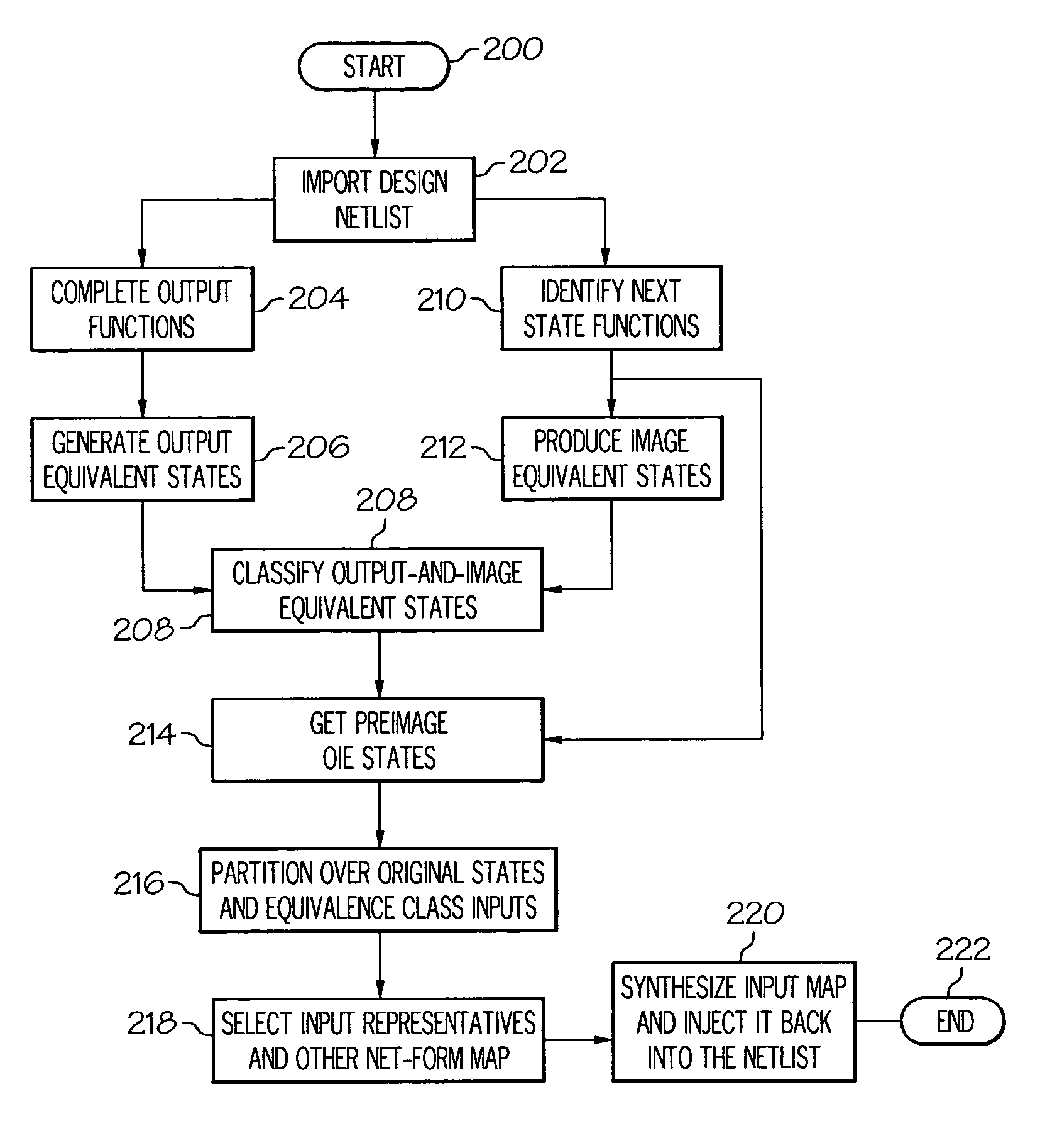Method for predicate-based compositional minimization in a verification environment
a compositional minimization and compositional technology, applied in the field of verification of designs, can solve problems such as the loss of tolerance of microprocessors, the failure of functional design, and the failure of microprocessors, and achieve the effects of reducing the risk of failur
- Summary
- Abstract
- Description
- Claims
- Application Information
AI Technical Summary
Benefits of technology
Problems solved by technology
Method used
Image
Examples
Embodiment Construction
[0019]The present invention provides a method, system, and computer program product for automated abstraction of netlists through bisimulation detection, which is sound and complete with respect to property checking. Unlike prior-art predicate-based abstraction approaches, which operate on word-level models or require manual guidance, the present invention utilizes a novel linear-time partitioning method to automatically isolate a component of a bit-level netlist graph, whose outputs represent an adequate set of predicates against which to preserve its behavior. Once selected, the present invention determines the equivalence-class of the states of the component which are bisimilar with respect to its predicates, and then determines the equivalence-class of its input space under transitions to bisimilar state sets. The present invention next synthesizes this input equivalence class into the design, to restrict the component's visibility of the original input space to equivalence clas...
PUM
 Login to View More
Login to View More Abstract
Description
Claims
Application Information
 Login to View More
Login to View More - R&D
- Intellectual Property
- Life Sciences
- Materials
- Tech Scout
- Unparalleled Data Quality
- Higher Quality Content
- 60% Fewer Hallucinations
Browse by: Latest US Patents, China's latest patents, Technical Efficacy Thesaurus, Application Domain, Technology Topic, Popular Technical Reports.
© 2025 PatSnap. All rights reserved.Legal|Privacy policy|Modern Slavery Act Transparency Statement|Sitemap|About US| Contact US: help@patsnap.com



